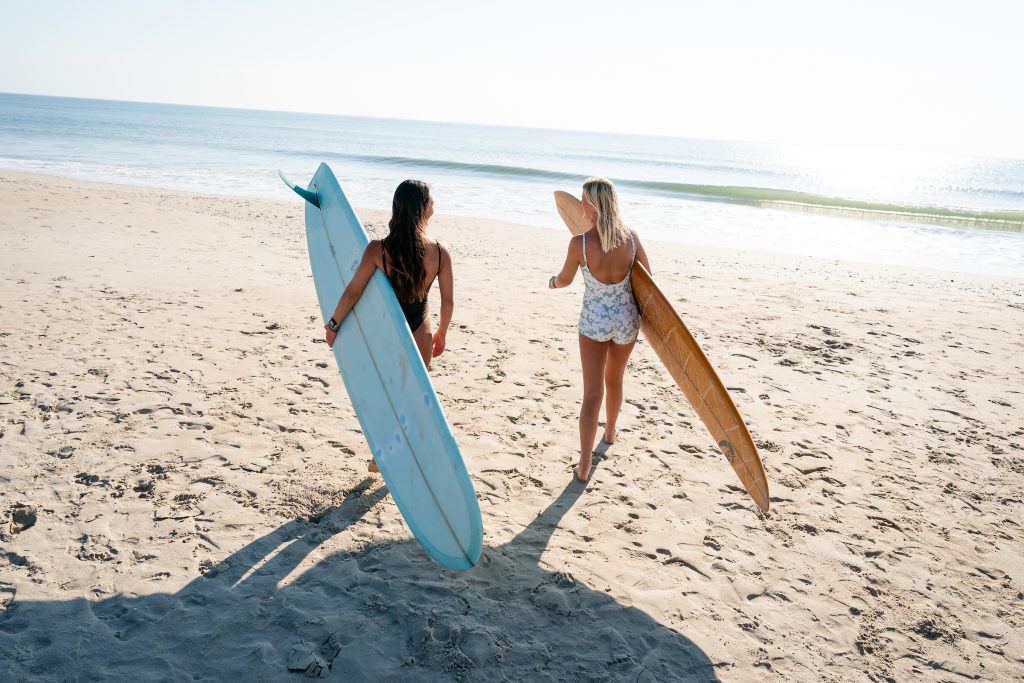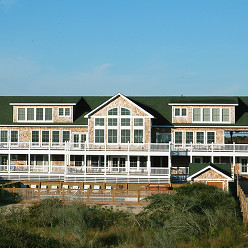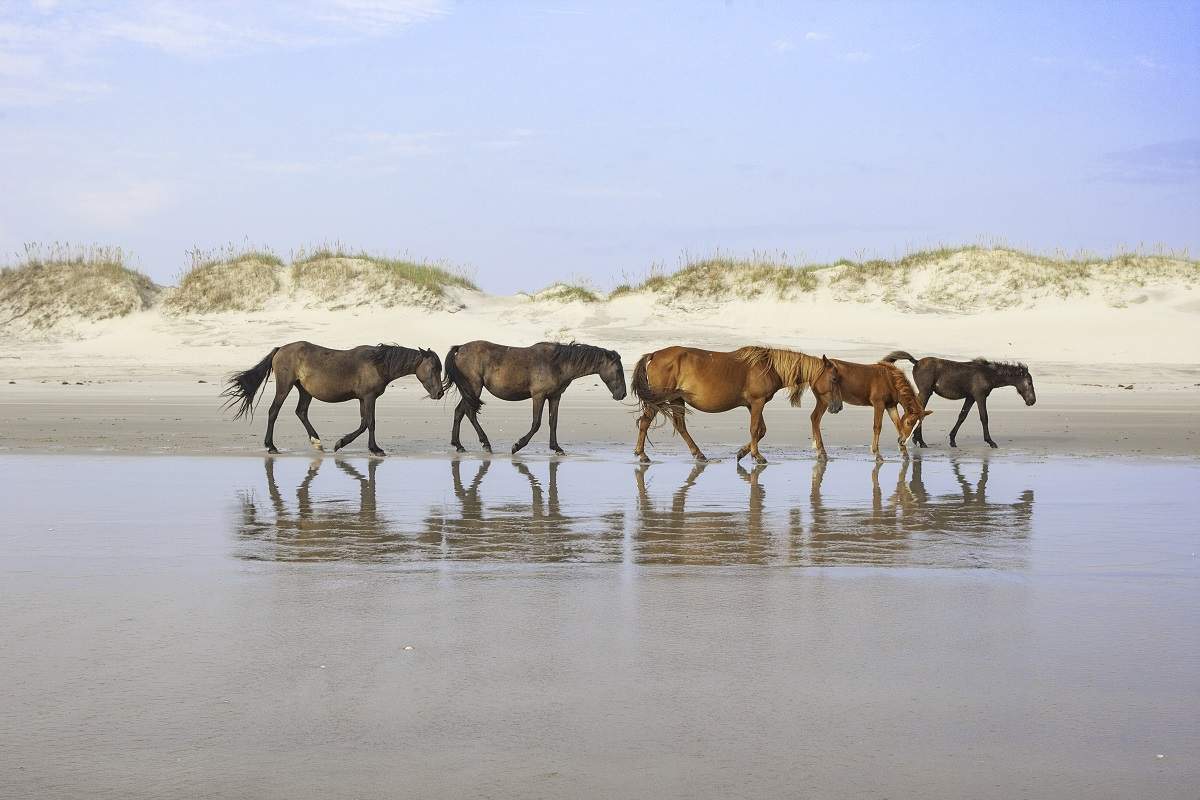Your Guide to Beach Safety on the Northern Outer Banks
The Northern Outer Banks of North Carolina — spanning from Corolla and up into the remote reaches of Carova—are known for their pristine beauty, wild horses, and peaceful, uncrowded beaches. But even in this coastal paradise, it’s important to stay mindful of beach safety. Whether you’re planning a relaxing day by the ocean or a full week of seaside fun, following a few simple guidelines can help keep your vacation safe and stress-free.
1. Know Your Address
Many of the cottages and rental homes have been adorned with a name, but that name is not searchable by emergency workers. Be sure that everyone in your party is aware of the address you are staying in case there is an emergency and you need to request help on premises. Additionally, this is important for beach accesses as well. Take a look at the sign name for your access prior to setting up on the sand. The emergency number on the beach is 9-1-1.
Helpful tip: Save the address to your rental and the name of your beach access in the Notes on your phone and share with everyone staying in your party.
2. Spot a Rip and Break the Grip of a Rip
Rip currents are fast moving currents of water that can pull swimmers away from the shore. You will find them throughout the Outer Banks, and it is important to know how to spot them and avoid them.
How to spot a rip current:
- A noticeable break in the incoming wave pattern
- A channel of churning, choppy water
- Water that appears darker due to greater depth
- Foam or debris moving steadily seaward
What to do if you’re caught in one:
- Stay calm — don’t fight the current
- Swim parallel to the shoreline until you’re out of the current
- Then swim back to shore at an angle
- If you can’t swim out, float or tread water and wave for help
Watch this video to learn more about getting out of rip currents:
3. Know Before You Go
If you and your crew are debating the pool or the beach for the day, you can add yourself to the daily beach conditions messaging by texting SAFECOROLLA to 888-777. The beach conditions will be shared daily from May through October and also provides access to safecorolla.com for additional information about the beach, rip currents, forecast, Ocean Rescue and more.
Beach conditions are shared using the flag system:
Green – Low hazard
Yellow – Moderate Hazard – Caution is advised
Red – High hazard – Strong Surf/Currents – Swimming not permitted
Red flags on the beach indicate that ocean conditions are considered unsafe and the risk is too high for the average swimmer. In addition, swimming when red flags are posted is against the law, and you will be fined. Churning water can easily knock you down, and reports of broken bones are not uncommon. Rough water also produces floating debris, such as ship timbers. Adults wading in knee-deep water can be knocked down by powerful waves and dragged by rip currents on red-flag days.
Note: A surfer may enter the water if they are attached by leash to a fiberglass surf board of at least 5 feet in length and that has at least one fin. Please be aware that most rental surf boards are not made of fiberglass and, therefore, do NOT meet this exception.
4. Swim near a Lifeguard whenever possible
Unlike some more developed beach towns, much of the Northern Outer Banks has limited or roving lifeguard coverage — especially in Carova and the 4×4 beaches. If you’re staying in a remote area:
- Do not enter the water if you do not know how to swim
- Always swim with a buddy — avoid swimming alone
- Don’t go out too far, especially during rough surf
- Consider wearing a brightly colored swim cap or using a floatation device for better visibility
If you need assistance, wave your arms for help to signal to the lifeguard that assistance is requested.
5. Protect Against Sun and Heat
The sun on the OBX can be intense, even on overcast days. Protect yourself with:
- Broad-spectrum SPF 50+ sunscreen (reapply every 2 hours)
- A wide-brimmed hat and sunglasses
- Plenty of water to stay hydrated
- A beach umbrella or sun shelter for shade
Keep an eye on children and pets — they’re more vulnerable to overheating and sunburn.
6. Keep an Eye on Tides and Sandbars
Tides shift dramatically along the Outer Banks. A calm sandbar can disappear in minutes as the tide rises. Always:
- Be aware of incoming tides, especially when walking long distances
- Avoid setting up beach gear close to the waterline during high tide
- Use a tide chart app or check local postings to know when the tide will turn
7. Respect Nature — and Each Other
The Northern Outer Banks is home to delicate ecosystems, nesting sea turtles, and the famous wild horses of Corolla. To help preserve the natural beauty:
- Keep off the dunes — they prevent erosion and house fragile vegetation
- Fill in any holes you dig and topple any sandcastles to protect turtles and prevent accidents
- Observe horses from at least 50 feet away and never feed them
- Leave the beach as you found it – clean, free of litter, and with all of the items you came with, including canopies, chairs, coolers and anything else you brought with you
Frequently Asked Questions (FAQs)
Locate a lifeguard who will use radios to communicate a description of your child. Stay with that lifeguard; he or she is your liaison with all other rescue personnel. Send a family member back to your house, if it is within walking distance, to determine if your child is there.
To prevent or minimize such a situation from happening, parents should discuss with their children beach safety and the importance of maintaining visual contact with one another. Make sure everyone knows where they are staying, including the house name. Put a bracelet on smaller children with all pertinent contact information.
A normal reaction to a jelly fish sting is red welts and sometimes itching or stinging. Unless you are experiencing difficulty breathing or are breaking out in hives, your reaction is typical and the best thing to do is apply heat and/or ammonia to break down the proteins in the venom. Do not scrub the sting with sand; this only agitates the stingers. If you do experience any difficulty breathing or any other adverse reaction, contact a lifeguard or call 9-1-1 immediately.
Shark sightings at the Outer Banks are extremely rare. But if you think you see a shark, DO NOT yell “SHARK!” like they do in the movies. That’s like yelling “FIRE!” in a movie theater. You would do nothing but incite panic. In all probability, it is not a shark. It could be a ray, a dolphin, a floating piece of debris, etc. If you think you see a shark, you should locate a lifeguard and calmly relay the location of your sighting and a detailed description of what you saw. That lifeguard will contact the appropriate authorities and they will determine what action should be taken.
To escape this current, swim straight toward shore if you are a strong swimmer. If you are not a strong swimmer, do not panic; wait and float until the current stops, then swim in.
Plan for a Fun (and Safe) Day at the Beach
A little preparation goes a long way toward ensuring a fun and safe beach experience. By respecting the ocean, staying informed, and watching out for one another, you can make the most of this beautiful coastal escape. Whether you’re watching the sunrise with coffee in hand or body-surfing the waves with the kids, staying safe lets you fully enjoy the magic of The Northern Outer Banks.


















